Become an Expat in Colombia
Imagine swarms of butterflies fluttering about everywhere you go, an abundant variety of tropical fruits and flowers found within the boundaries of one country, and that image may help to capture a part of the essence of Colombia’s magical realism.
Colombian author Gabriel García Márquez coined the term “magical realism” and it refers to a style of storytelling mixing a realistic view of the world with a bit of magic and fantasy. The genre is apt in describing the realities of Colombia and its complex and turbulent history, but also the enchanting natural beauty, vibrant rhythms, colorful culture, and fun-loving people that has helped put Colombia on the map as one of the hottest destinations in the world!
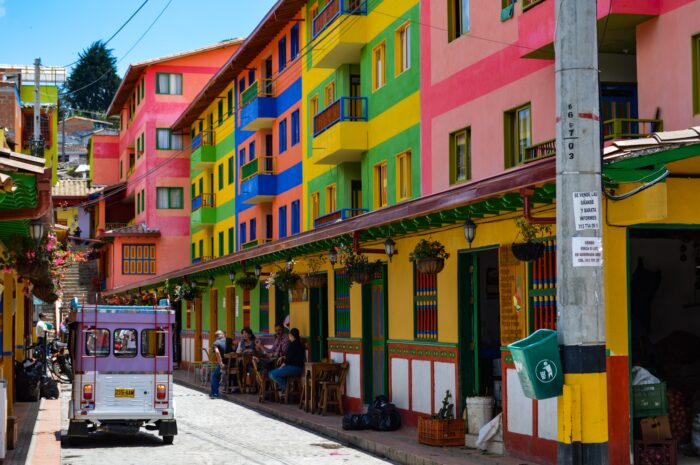
Moving to Colombia has never been as appealing as it is now. The country has had a gradual but strong recovery from its infamous violent past in the 80s and 90s. And today, due to its affordability, breathtaking scenery, and diverse culture, it attracts tourists, digital nomads, business ventures, and foreigners looking for a bit of adventure and a better quality of life.
If you’ve got your eyes on this gateway to South America, keep reading to learn all about what it’s like to live in Colombia!
Living in Colombia
When I think of Colombia one of the first things that comes to mind is diversity—in all its forms. For starts, the exotic fruit situation in Colombia is no joke! It boasts the greatest variety per square mile in the world and many of these fruits are turned into juices such as Lulo, Maracuyá, Guanábana, Curuba, Borojó and Guayaba just to name a few. Considering how hospitable, warm, and welcoming Colombians are, it is common for people in certain regions to offer you a “jugo” or fresh juice or a small shot glass size of “tinto” or coffee, when paying them a visit at their home.
Colombia, a country about twice the size of Texas, houses 10% of the planet’s biodiversity—making it one of the world’s most “megadiverse” countries! It ranks at the top of the diversity boards for bird and orchid flower species, butterflies, plants, and freshwater fishes and amphibians.
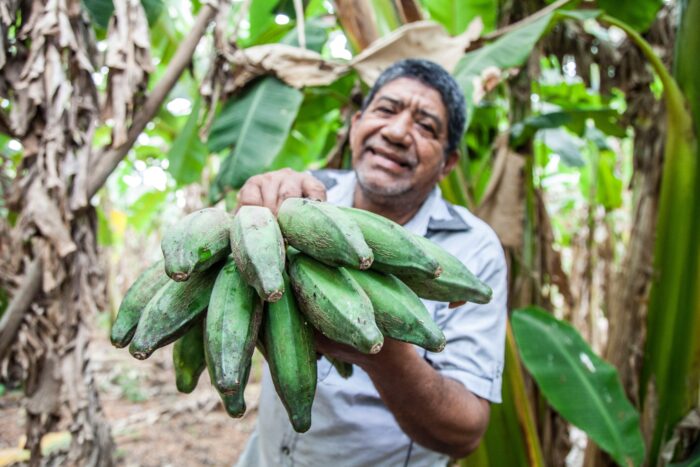
Its varied topography includes high grounds, plains, jungles, deserts, islands. There is something for everyone, from the desert dunes of La Guajira, to the snowy mountain peaks of the Andes mountains to the Amazon rainforest and jungles.
And just like the biodiversity of the country, Colombia overflows with diversity when it comes to genres of music, each with its own distinct dance moves, unique to every region of the country. This is a nod to the multicultural mixture of Indigenous, African, and European influences, as well as separate subcultures created due to the geographic separation of each region. There’s the famous Salsa Caleña which made Cali, Colombia the salsa capital of the world and the coastal Caribbean Carnival dance styles like Cumbia, Puya, and Mapalé…but there is so much more!
There is no shortage of diversity here! If you love variety, Colombia has plenty to keep you fascinated, all within its own borders.
Cost of living in Colombia
The cost of living in Colombia is incredibly affordable, especially if you compare it to a country like the United States. The monthly estimate for a family of four is about $1,425.22 USD without rent. If you’re on your own, you’re looking at about $410.73 USD, again without rent.
Rent prices will vary depending on a variety of factors: city, neighborhood, apartment vs house…but no matter the case, rent is on average 80% less than that of the U.S. For example a two-bedroom apartment might run as low as $300 to over $1000 USD, it really depends. Expect to pay a lot less for utilities, transportation, eating out, entertainment, and healthcare.
Moving to Colombia
Most foreigners, including U.S. citizens, can stay a total of 90 days in Colombia without a visa (non-U.S. citizens double check with your local Colombian Embassy or Consulate). However, if you’re looking to stay longer there are 3 visa categories to choose from:
- Visitor Visa (also referred to as a Tourist Visa)
- Migrant Visa
- Resident Visa
Visitor Visas aren’t really a long-term solution as they are usually issued for a maximum of 90 days, however, in some cases can be issued for up to 2 years. This is more for those who are coming to Colombia for an internship, leisure activities, medical treatment, working holiday program, etc.
Migrant Visa is an umbrella term for long-stay visas such as: Marriage Visa, a Work Visa, a Student Visa, an Investment Visa, a Retirement Visa, a Religious Visa, and a Refugee Visa. This visa can be issued for a maximum of three years and is renewable.
Resident Visas are for those who 1) have had a Migrant Visa continuously for at least four years, 2) have a Colombian child, 3) are reclaiming their Colombian nationality, 4) invested a substantial sum of money in Colombia. This visa is issued for five years at a time and can be renewed.
Is Colombia safe?
Colombia is a lot safer than it used to be but it still has its crime problems. In this fruit loving country, a common phrase that Colombians say to remind you to be careful while walking around is “no dar papaya”, which literally translates “to not give papaya”, a warning to not put yourself in a situation where you could be taken advantage of, so dress down, stay alert, and don’t make yourself a target to petty theft.
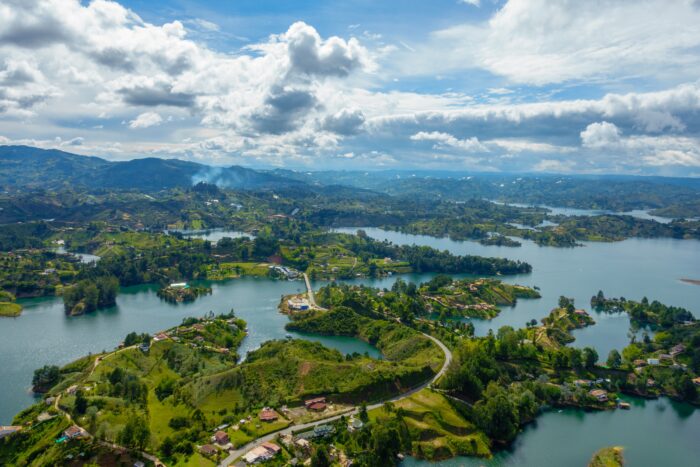
Just like anywhere in the world it’s important to use street smarts and stay away from dangerous areas. If locals tell you to avoid a certain area in a city or town, then take the advice as truth. Petty theft is still a nuisance in Colombia so common sense is your best defense, keep your cellphone and wallet safely hidden, don’t wear flashy or expensive jewelry, and don’t wear expensive looking clothing and accessories.
Unfortunately drug trafficking and the violence it brings is still a reality in Colombia but much of this danger happens in areas that tourists and expats wouldn’t venture to anyway- at the border of Ecuador, Panama, and Venezuela.
Colombia is a relatively safe country and like anywhere else, take the regular precautions—stay alert, avoid certain places, and stick to the main areas.
Best places to live in Colombia
Some of the reasons why Colombia is a great place to live is its low cost of living, warm, rich culture, diverse topography, and for those coming from the U.S. and Canada, its proximity to North America is a huge perk. Whether you’re looking for a city or town with beach vibes, mountain peaks, or a bustling downtown, Colombia has it all! And the best part of any country is the people—Colombians will leave an indelible mark on your soul with their joyful energy and contagious enthusiasm for life. Here are some of the top spots for those looking to move to Colombia!
Medellín
Located in the middle of the country, currently Medellín is the number one city in Colombia for foreigners. This is quite the 180 degree turn from being the most dangerous city in the world just a few decades ago.
With an influx of digital nomads, startups, and innovation, Colombia is racing to become the next Silicon Valley of Latin America with Medellín as the “innovation-minded hub” of the country. The Paisa people—what people from this region are called—are known throughout the rest of Colombia for being entrepreneurs and innovators.
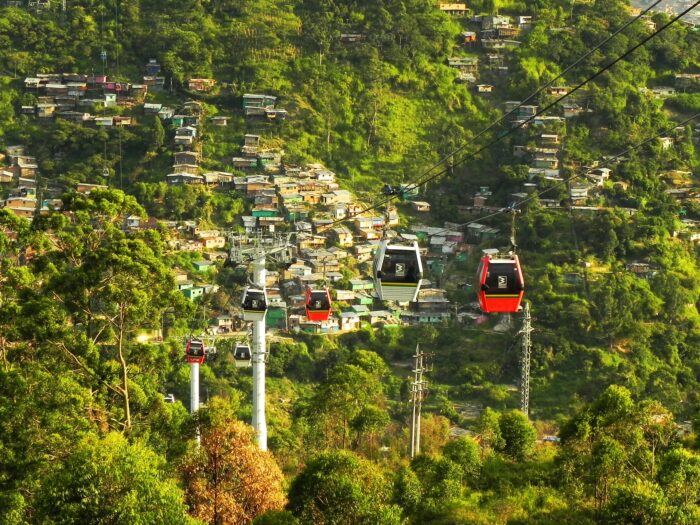
The city is clean, organized, and has a great transportation system compared to other Colombian cities—Medellín is actually the only city in Colombia that has a subway system. What charms people the most about this enchanting city is the weather!
Medellín is known as the City of Eternal Spring due to an average annual temperature of 72.5 °F. Medellin is a jewel and beyond the city you’ll find vibrant colorful small town pueblos to explore just a few hours away, like Guatapé, Jardín, Santa Fe de Antioquia, and Jericó.
Check out the Facebook group Expat Women of Medellin for advice on moving to Medellin.
Barranquilla
Hometown of Shakira, Barranquilla is an industrial and cosmopolitan port city on Colombia’s Caribbean coast. The city is known for its world famous Carnival, a folkloric festival dating back to the 1800s; Rio may host the world’s largest Carnival, but Colombia ranks second place! Dance and music is an integral part of the culture of Barranquilla, locals prefer Vallenato music, but Cumbia, Puya, Mapalé, Salsa, and Champeta can be heard all around.
Barranquilla is one of the best kept secrets in Colombia, it has a population of about 1.2 million and there aren’t a lot of tourists here-they are all in neighboring colonial city Cartagena that is suffering from cruise ship over-tourism. It’s estimated that there are over a quarter of a million Colombians of Arab descent coming from Lebanon, Palestine, Jordan, and Syria to escape the Ottoman Empire in the 19th century. A large population lives in Barranquilla lending to its wide array of Middle Eastern restaurants as well as other international cuisines.
Remember this is a city on the Caribbean coast so you have to like the heat (and humidity) to live here. Highs on average are in the 80s to 90s °F.
Bogotá
Bogotá is Colombia’s largest city, and capital, with a little over 7 million inhabitants. It sits at an altitude of 8,660 feet above sea level, making it the third highest capital city in the world after La Paz, Bolivia and Quito, Ecuador. If you enjoy cooler mountainous weather and a big boisterous city, then this might be the place for you!
The weather can change quite a bit on a daily basis, so layers and adaptability is key. It may be warm under the daytime sunlight but as soon as the sun starts to set it might be time for sweater weather and boots. Light rain falls consistently throughout the year; it usually rains 305 days on average a year, expect light droplets on most days.
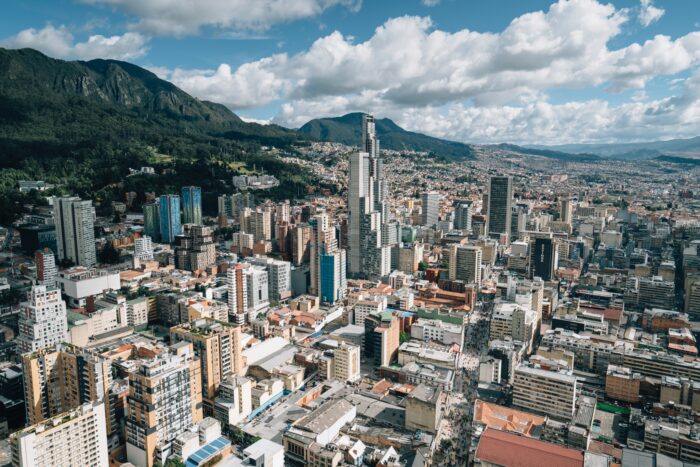
Given that it’s such a large city, Bogota is the place for global diversity. You’ll find a large concentration of expats here and the city almost matches Medellin when it comes to digital nomad culture and startups. But with all the foreigners here don’t assume you can get by on just English, you’ll definitely need to learn Spanish if you plan to call Bogota home.
There is plenty to keep you busy in Bogota and its surroundings, from museums and galleries to the performing arts, to street festivals and cycling (the largest bike path network in Latin America is here). Plus the mountainous landscape is ideal for sightseeing, mountain biking, and hiking.
Santa Marta
Located in north, Santa Marta was actually the first Spanish settlement in Colombia (1525) and one of the oldest settled cities in the Americas that still stands. However, this Caribbean beach city is my personal favorite due to its pride of its indigenous roots. Statues celebrating indigenous heritage can be found throughout the city along with murals and other odes to Native Peoples and culture. This area is frequented by Arhuaco, Wiwa, and Kogui Indigenous People who live on sacred land and travel to Santa Marta from their towns or reservations to stock up on goods.

In Santa Marta’s scenic Centro Historico, or historic downtown, you’ll find colonial style buildings, a wide variety of restaurants, colorful murals, and the beach! This surfside city has been a hotspot for bohemian foreigners but it’s starting to become a digital nomad hub.
If you love the water and the outdoors, Santa Marta is just a 30 minute drive from Tayrona National Park. Located at the foothills of the Sierra Nevada de Santa Marta mountain range, Tayrona is a federally protected area that is part of the Indigenous People’s ancestral territory. Here you’ll find pristine turquoise beaches complemented with one of the most biodiverse areas of the Caribbean. In addition to Tayrona National Park there are charming fishing towns, hiking trails, snorkeling, scuba diving, and loads of fantastic surf spots up and down the coast…but be careful with the heavy tides and the caymans!
Check out the Expat in Santa Marta – Magdalena – Colombia Facebook group to connect with others who have made the move here.
Healthcare in Colombia
Colombia is a growing medical tourism destination due to its affordability and quality of care. People come for cosmetic surgery, cardiovascular procedures, laser eye treatments and more! The country ranks #22 on the World Health Organization’s list of the top healthcare systems in the world— compared to Canada #30 and the U.S. #37.
Healthcare in Colombia is universal meaning that all residents have access to the (mandatory) public system. Public healthcare costs vary. It’s calculated based on your income (12.5% of 40% of your monthly gross declared income). Private insurance costs vary depending on your age, plan and pre-existing conditions. Expect to pay 50-70% less than what you’re paying in the U.S.
As with most places in the world, healthcare in larger cities like Medellín, Bogotá, and Cali will be much better than in the rural areas.
American in Colombia
I’m Alé and living in Colombia was a dream for me. My mother is from the capital, Bogotá, and moved to the U.S. after marrying my American dad who she met during his Peace Corps service in Colombia from 1978-1981.
While I was born and raised in the U.S., I visited my maternal family in Bogotá frequently growing up and fell in love with Colombia. Even despite the violence and insecurity at its worst in the 90s when I was a girl, I vowed to live there one day!
Fast forward to 2016, my husband and I got accepted to the Peace Corps together to follow in my dad’s footsteps. It was an exciting time because my father was part of one of the last cohorts to serve in Colombia before the program shut down for 30 years due to the violence. It was brought back in 2010 which signaled a renewed sense of safety in the country. We were placed in a small Caribbean beach town called Dibulla, La Guajira, next to the luscious Sierra Nevada mountain range and tropical forest, just two hours east of Santa Marta and one hour west from the Guajira desert. The opportunity to live in Dibulla for two years was incredible, even though living in a rural area as a woman was challenging at times due to machismo attitudes. I’d love to move back, but this time closer to an urban area.
I recently acquired my Colombian citizenship (through my mother), and helped my sister do the same! We both dream to live in our maternal homeland, where my sister hopes to own an apartment to rent out for short-term stays, but also to vacation when she has time. My husband and I would like to own a finca (a small plot of farm land) with a cabin somewhere along the Caribbean near Santa Marta and La Guajira.

Colombia is an enchanting place and while the movie Encanto gives you a taste of what to expect, come experience the magical realism for yourself! Feel the rhythm and liveliness of Colombian music, experience the warm unparalleled hospitality and rich, joyful culture, and refresh yourself in the lush, natural megadiversity that Colombia offers.
Whether you are a Colombian descendant looking to move back to your ancestor’s homeland or an expat who is looking for an affordable alternative in Latin America with endless diversity, what are you waiting for? Colombia is calling!





3 thoughts on “An Expats Guide to Living in Colombia”
Might you know if siblings who have Colombian citizenship can give their other siblings citizenship if they weren’t born in the country and the parents are deceased?
Hi Beth! That’s an interesting question. I don’t believe siblings can pass citizenship to other siblings. However, you can still acquire citizenship from a deceased parent who had Colombian citizenship (I did, my mother had already passed when I applied for Colombian citizenship). Best of luck!
Colombia has become a popular destination for a large number of expats looking for a good quality of life at a low cost. Most of its cities are welcoming enough, with adequate social activities, a pleasant climate, and other amenities. That’s why Colombia is in the top choice on tourist.